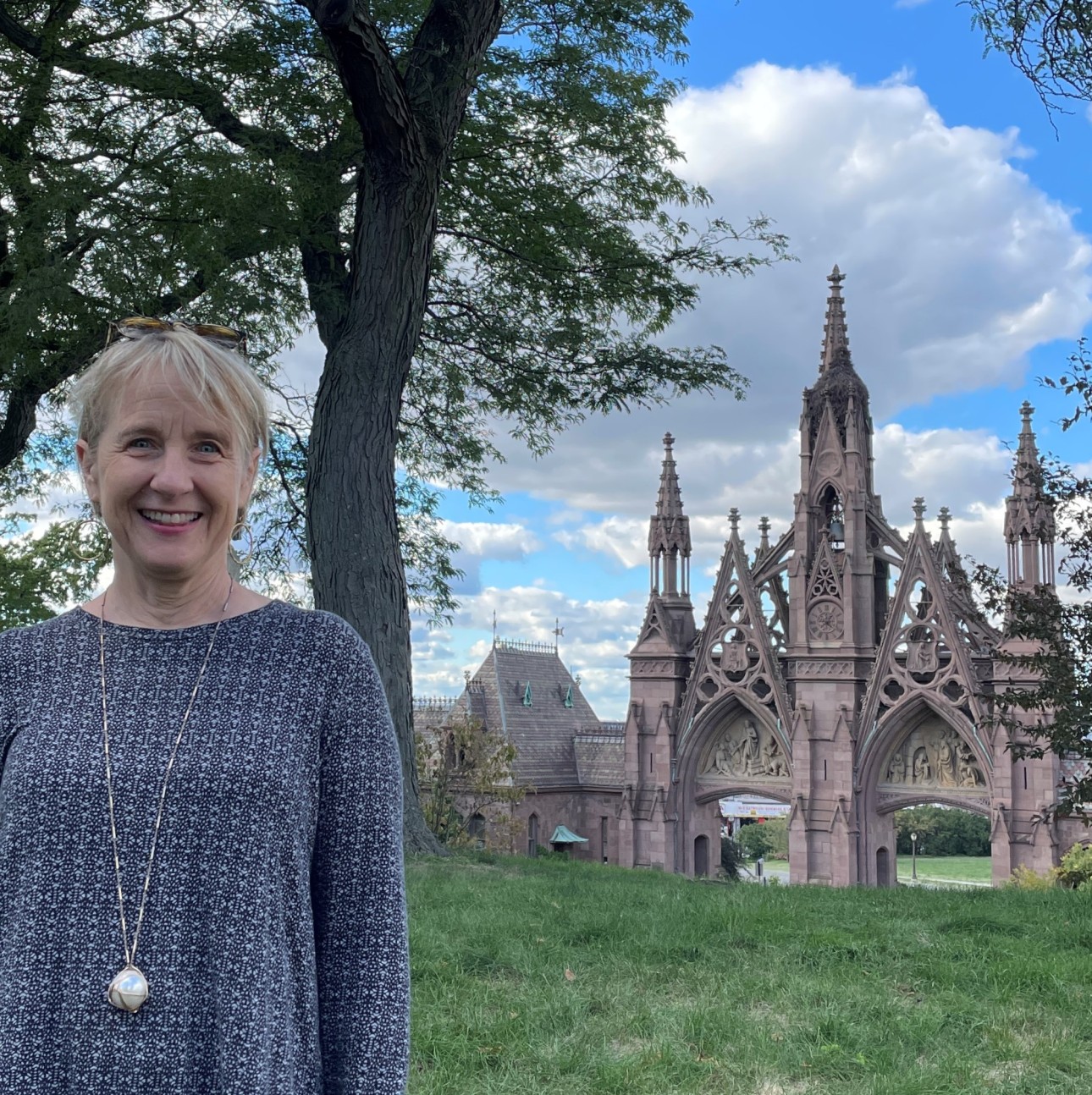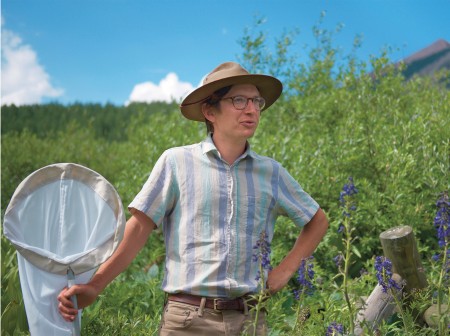Lisa West Alpert is perfectly at home among gravestones and mausoleums. And as the vice president of development and programming at New York City’s iconic Green-Wood Cemetery, Alpert is challenging the public’s perception of burial grounds.
Set in the west side of Brooklyn, Green-Wood is a 185-year-old cultural institution and visitor destination on 478 picturesque acres of hills and valleys and glacial ponds.
“[When you’re] deep within the cemetery, along one of the winding paths, among the towering trees and the thousands of 19th-century headstones ... you really don’t know you’re in New York City anymore, and you may not even be sure what century it is,” says Alpert. “You’re surrounded by history and nature. It’s a profound experience.”
Alpert ’88 MBA joined the cemetery staff in 2010 after working at New York City arts and cultural organizations. Her role has grown to include oversight of the cemetery’s rich archives and public and educational programming.
“We want to invite people in,” Alpert shares. “Many have complex feelings about cemeteries; some just will not feel comfortable. But we’ve worked hard to welcome the community in a way that strengthens Green-Wood and, we hope, strengthens our Brooklyn neighbors as well.”
A national historic landmark, Green-Wood hosts 250 programs a year, from educational trolley tours and birding expeditions to film festivals and historical reenactments. The lush, wooded cemetery welcomes 500,000 annual visitors, including 5,000 schoolchildren who tour the grounds and learn about Green-Wood’s famous inhabitants.
Founded in 1838, Green-Wood is a “rural” cemetery, a style that became popular in the mid-19th century due to rapid overcrowding of urban cemeteries. Today, Green-Wood boasts more than 8,000 trees and shrubs, as well as a collection of beehives. The cemetery bottles and distributes the honey from those hives under the label The Sweet Hereafter.
In recent years, Alpert has been inspired by a new purpose — to lessen Green-Wood’s ecological footprint. For starters, Green-Wood earned accreditation as a certified arboretum and converted acres of its land to pollinator meadows, to cut down on the cemetery’s reliance on fossil fuels and carbon emissions through reduced mowing.
By Alpert’s estimate, nearly 20% of the surface of New York City is covered by lawns, which are mowed once a week. “Are there ways to think about changing [our approach to maintaining the grounds so we’re not contributing as much greenhouse gas to the atmosphere? This is a huge area of emphasis,” she says. “We also now have three environmental researchers on-site, studying our soils.”
Alpert says her time at the Kellogg School of Management challenged her to “think about all the constituencies an organization serves and affects. You have to be aware, mindful and appreciative of the impact you’re leaving.”
At Green-Wood, honoring the 570,000 “permanent residents” — who include the likes of conductor Leonard Bernstein ’57 H, Neo-expressionist artist Jean-Michel Basquiat, famed newspaper editor and publisher Horace Greeley and artist and designer Louis Comfort Tiffany — remains the most meaningful part of Alpert’s job.
“The cemetery is and always will be a place to commemorate the memories of hundreds of thousands of people,” she adds. “We’re honoring that core function of the cemetery. That’s our legacy.”
Maura Brannigan ’12 is a freelance writer, editor and content strategist who covers and advises on fashion, retail and design, with an emphasis on the environment, ethical and sustainable supply chains, and consumer culture.




Reader Responses
No one has commented on this page yet.
Submit a Response